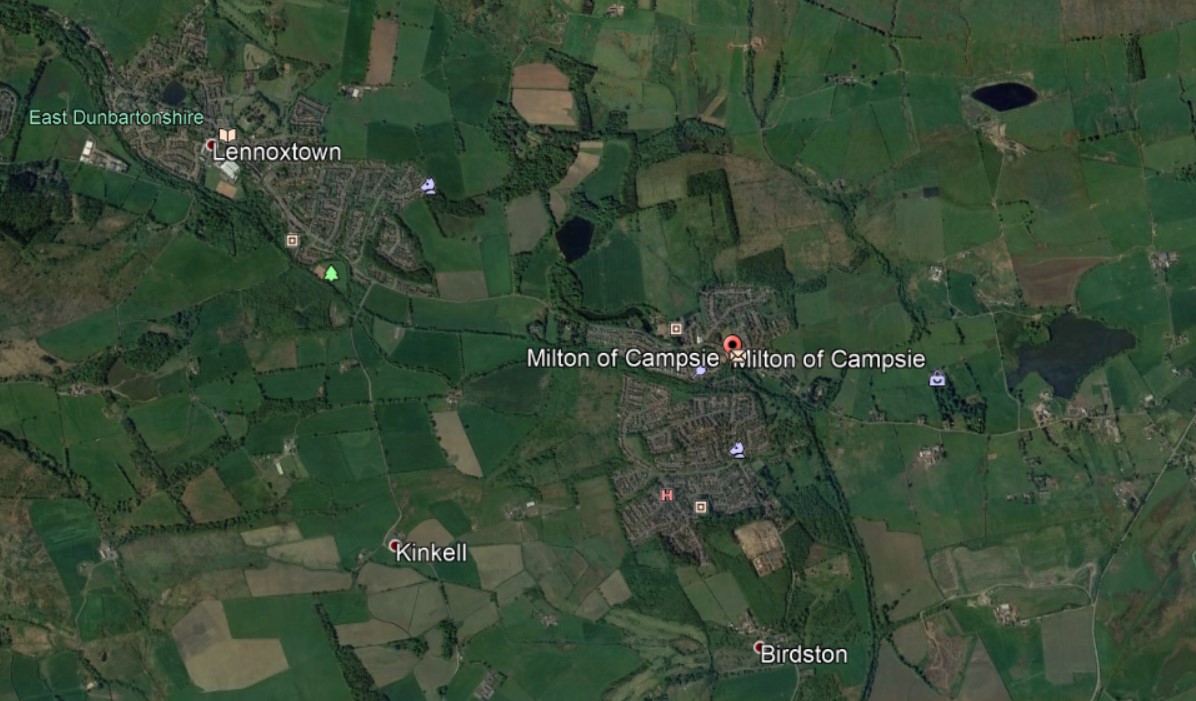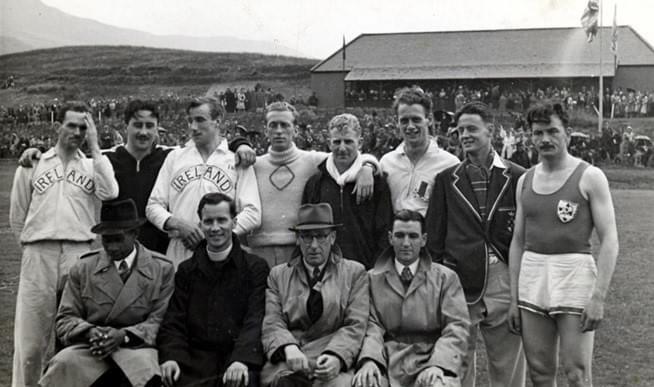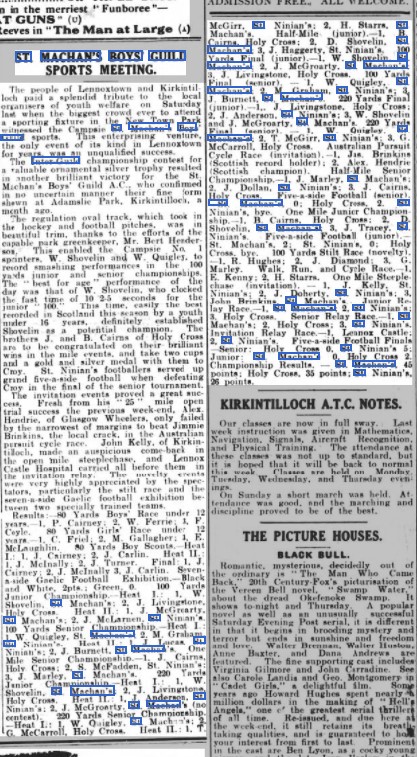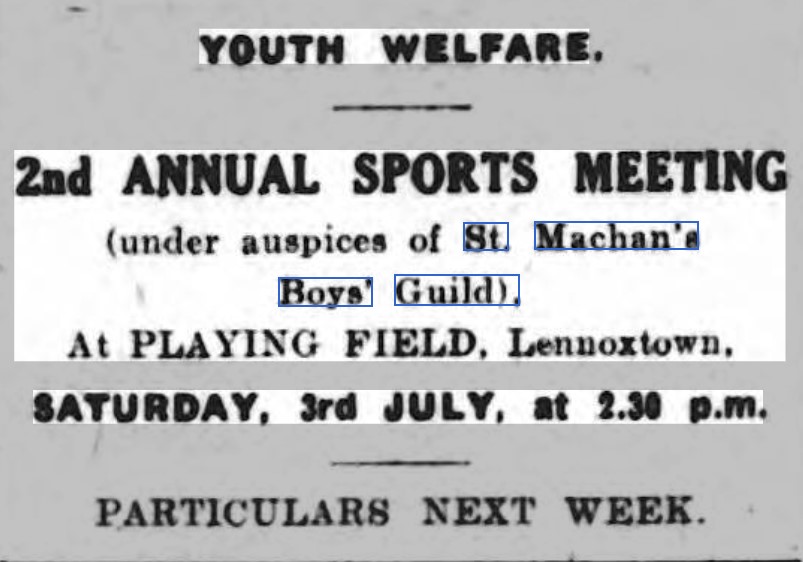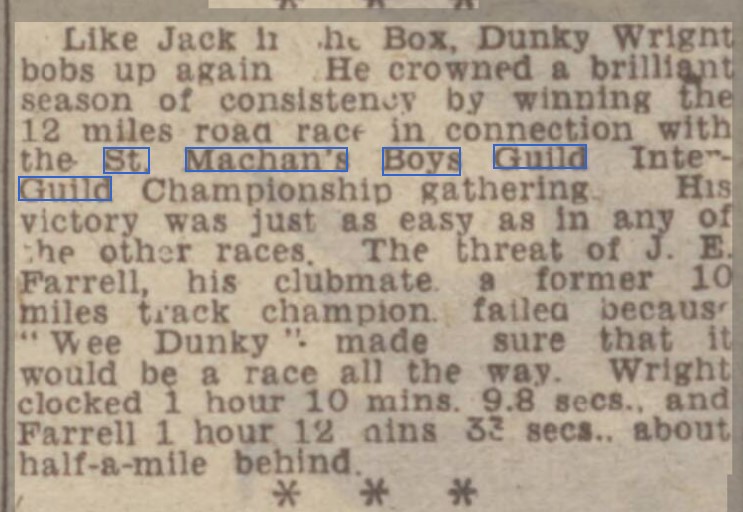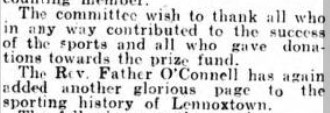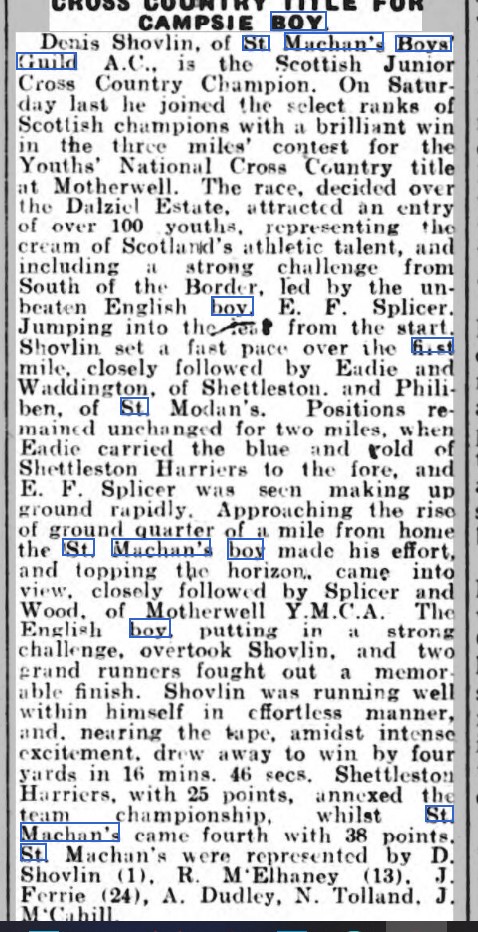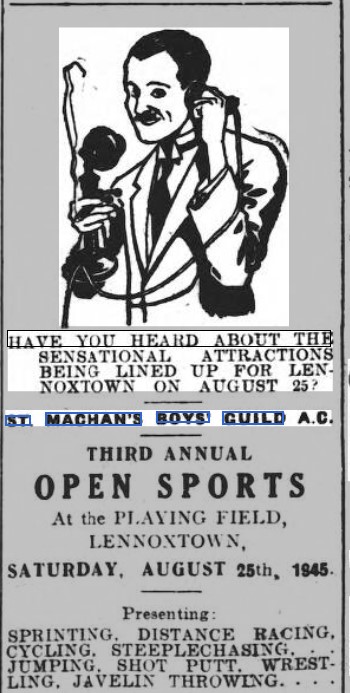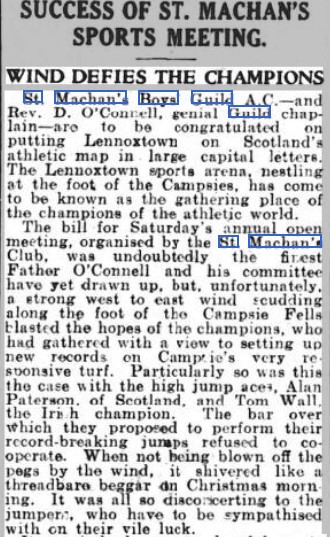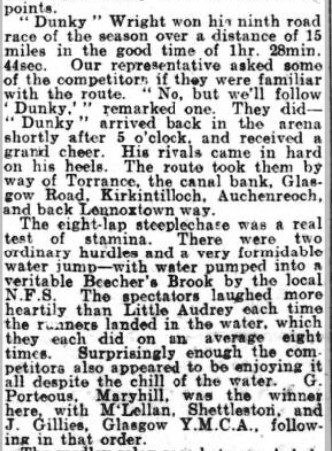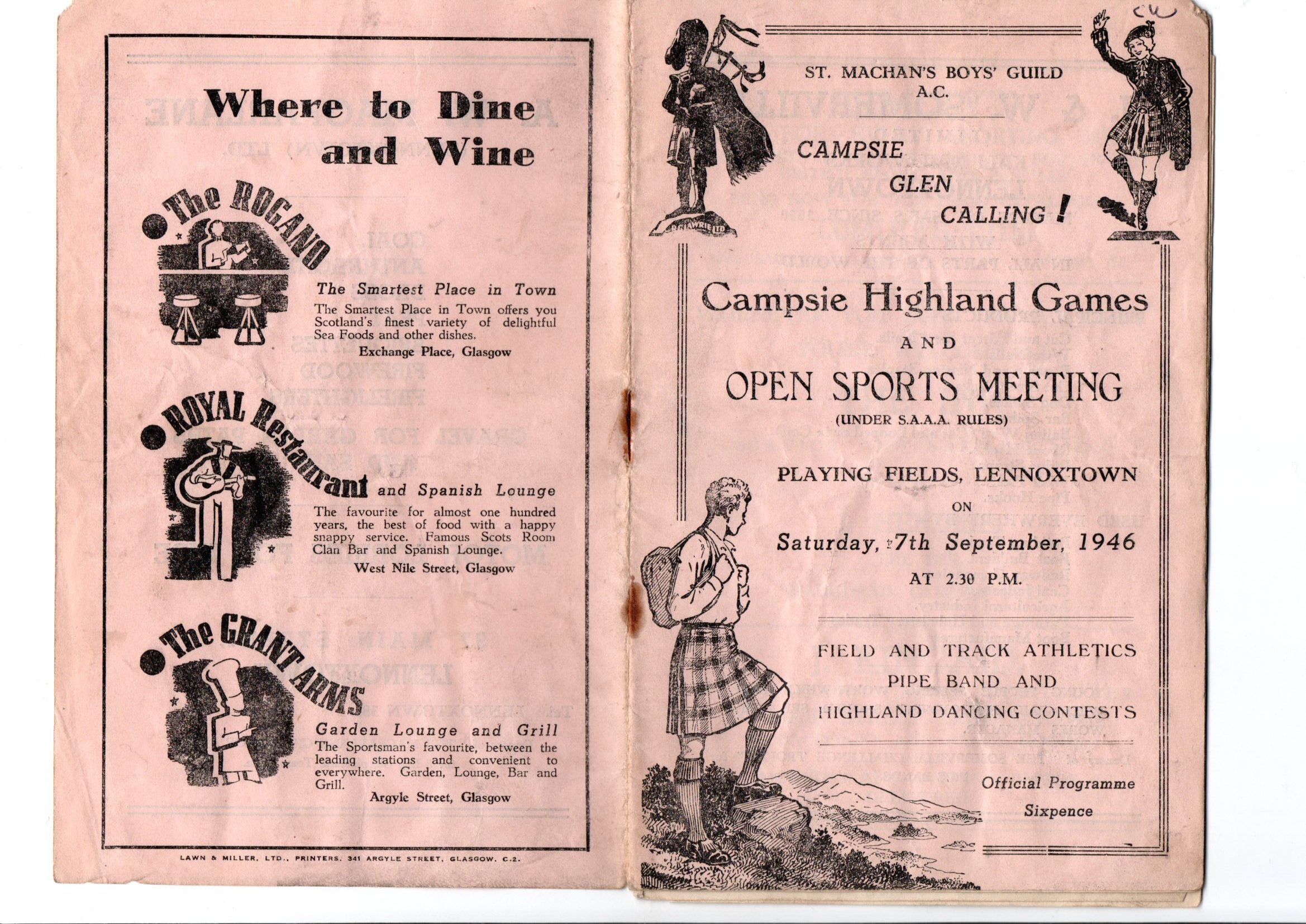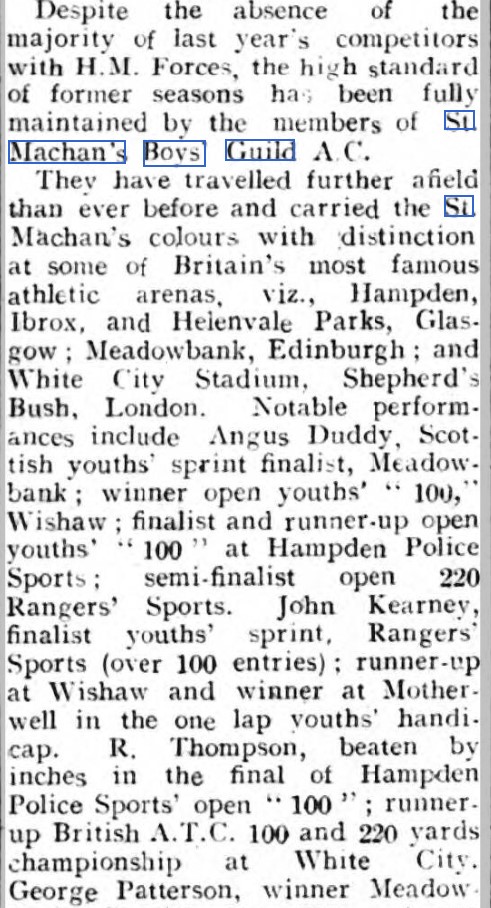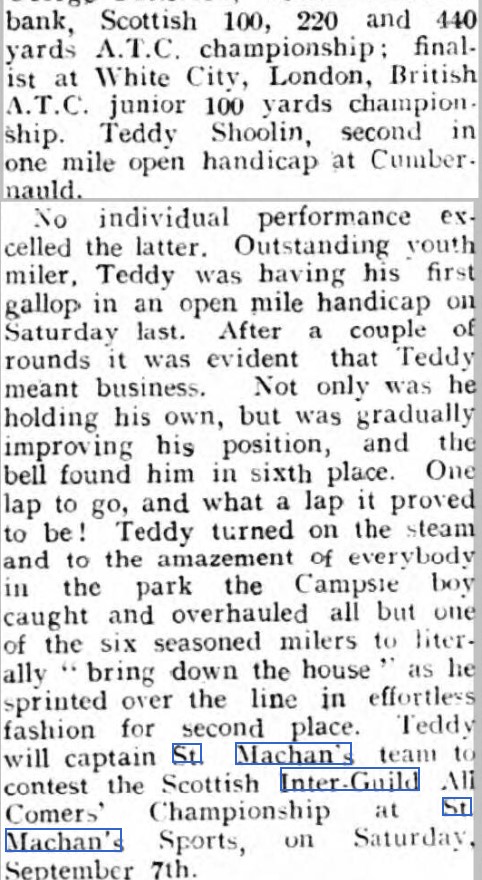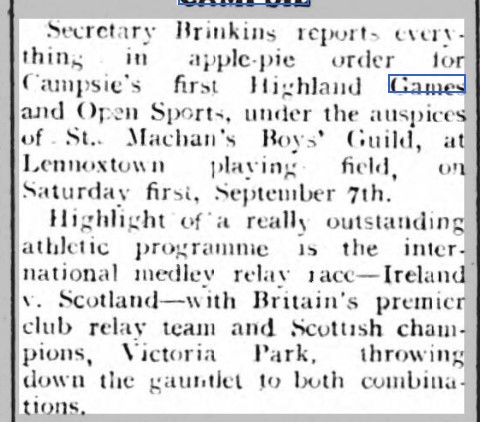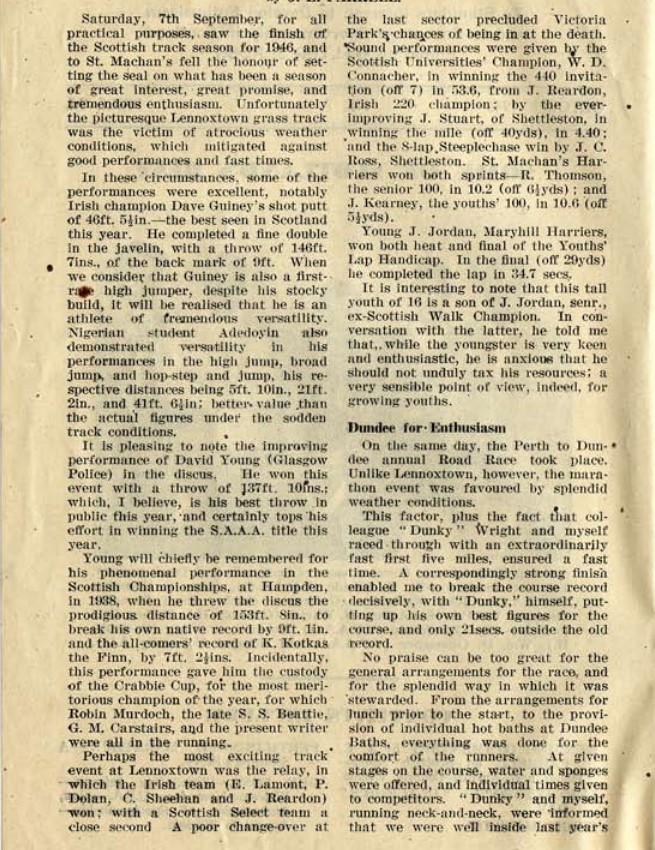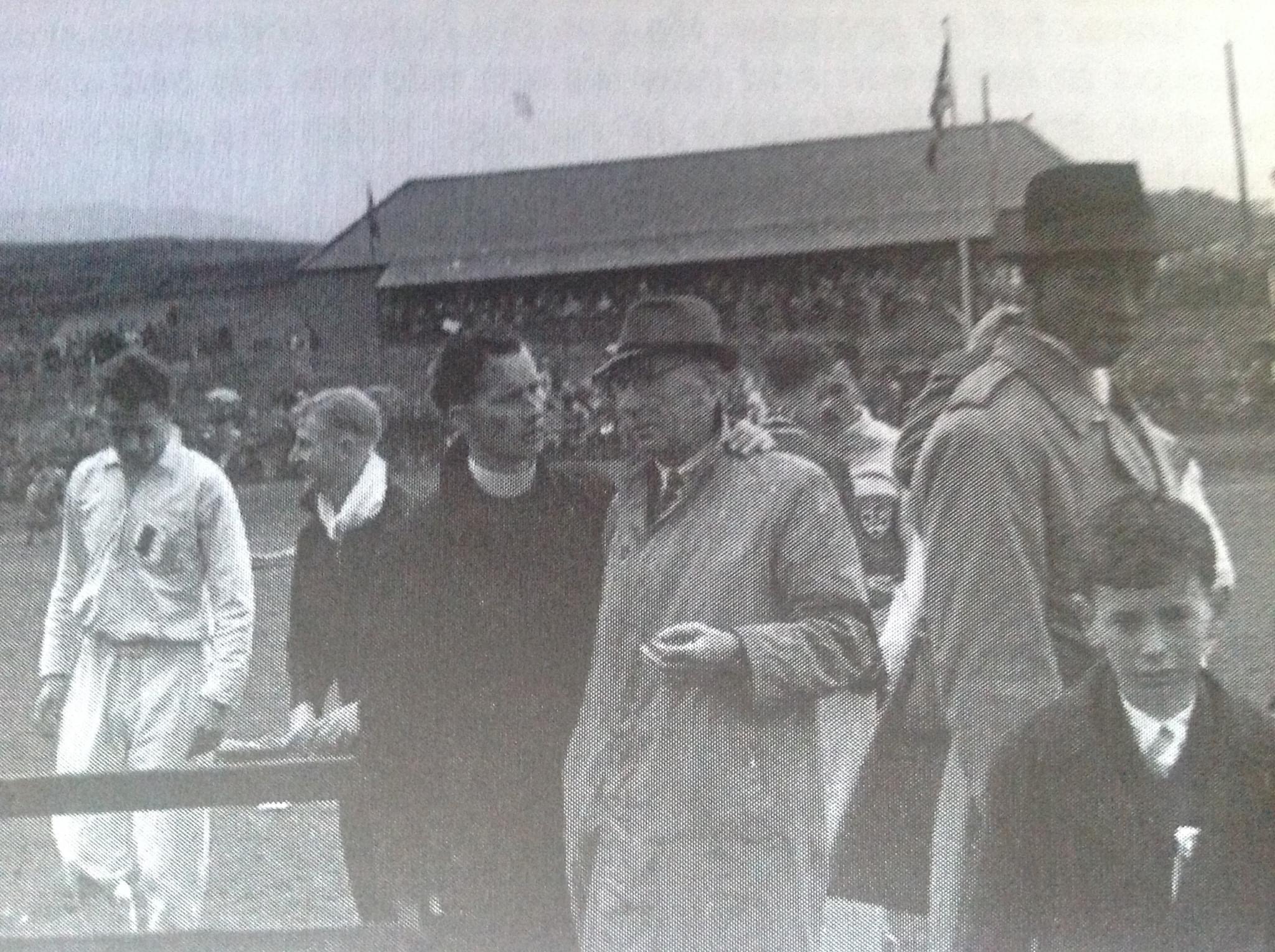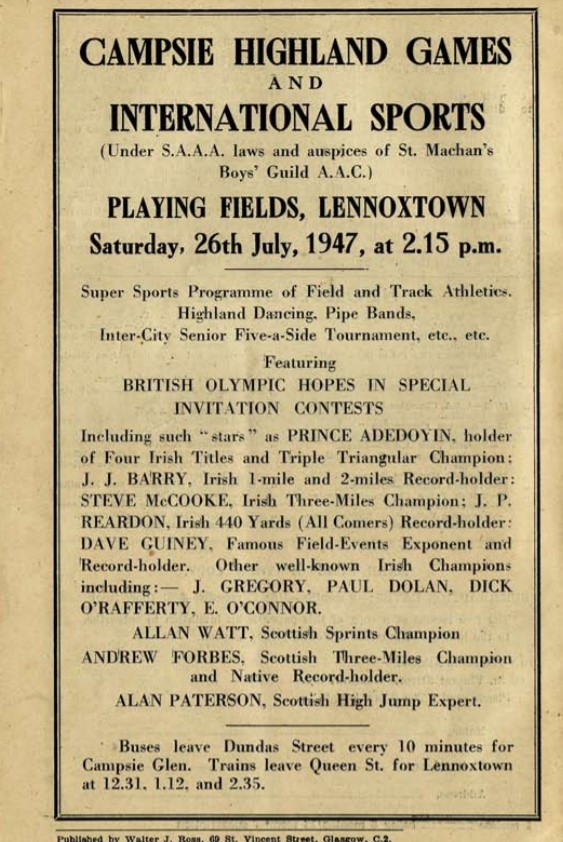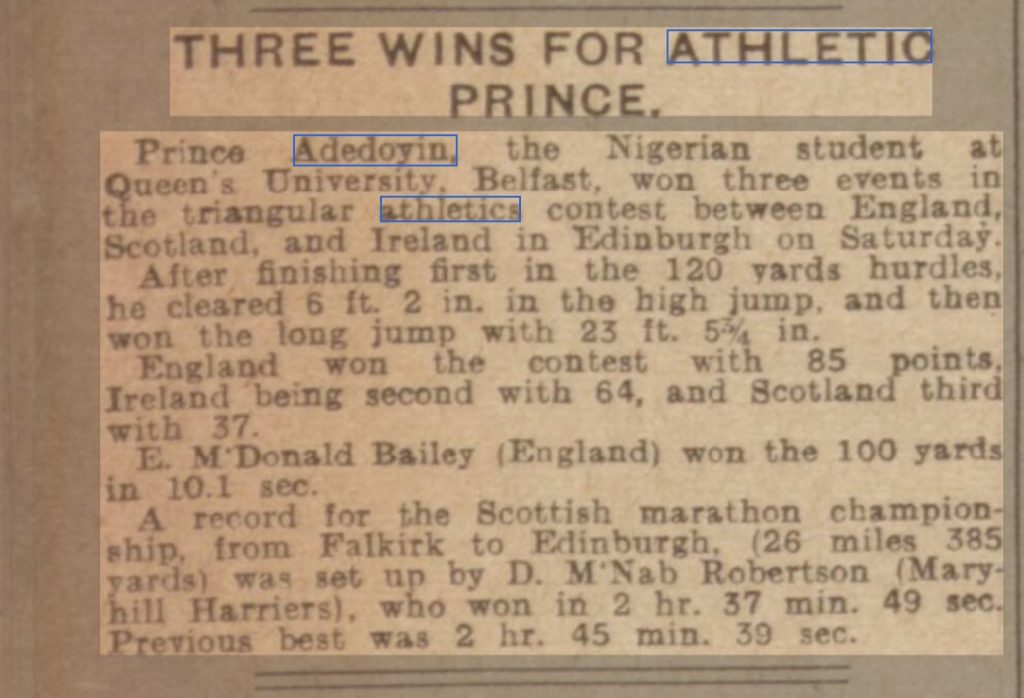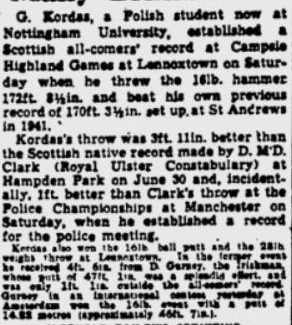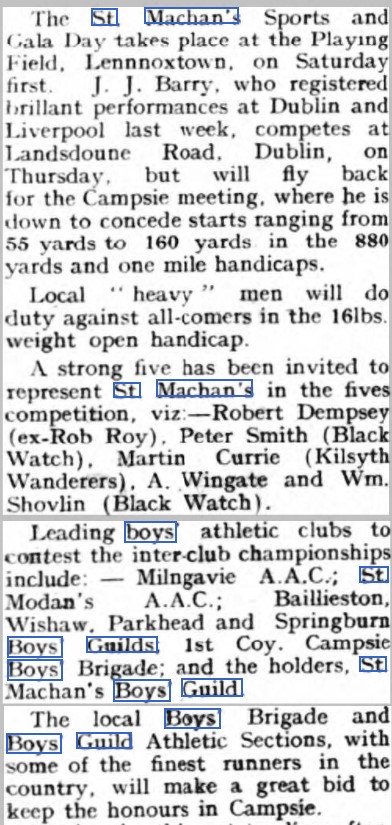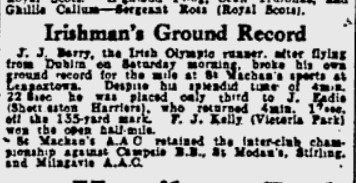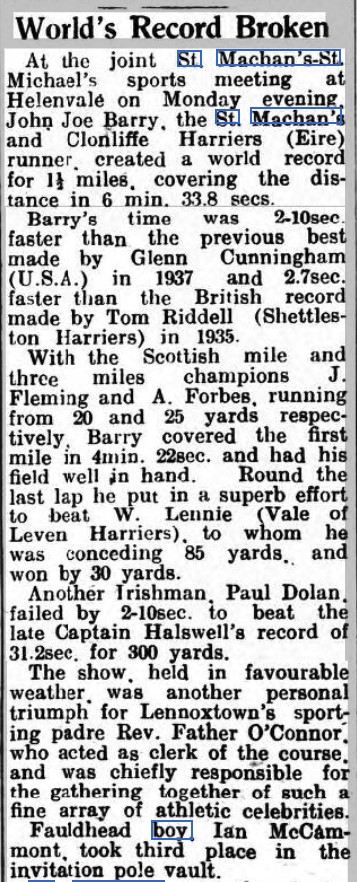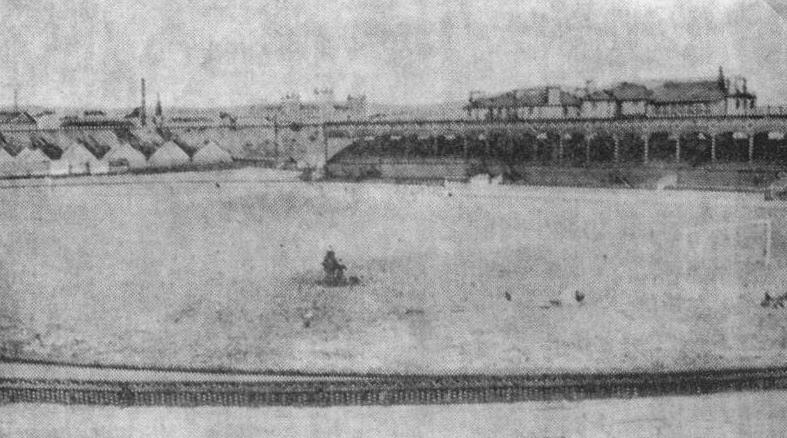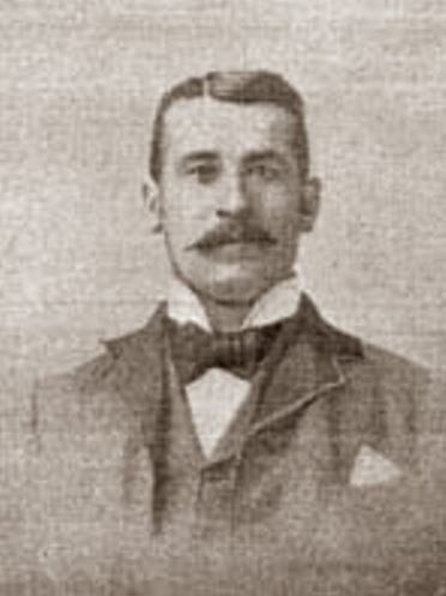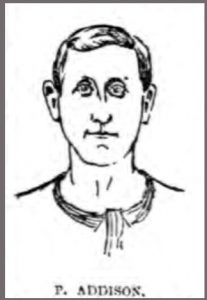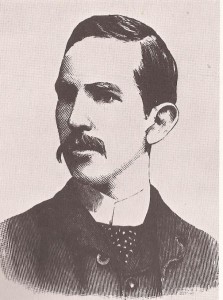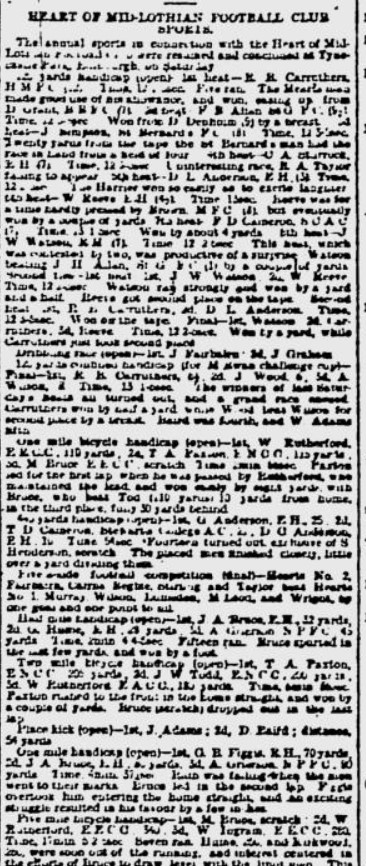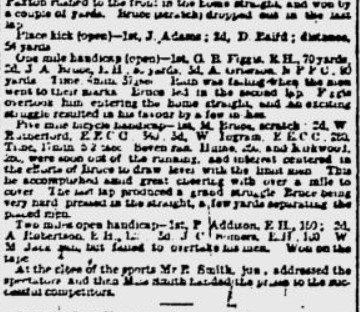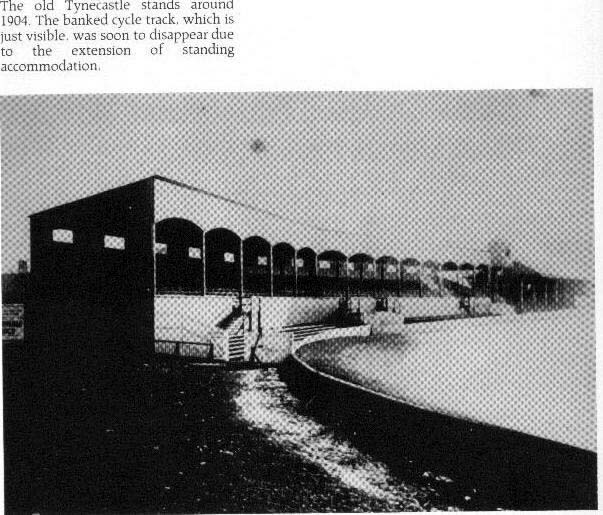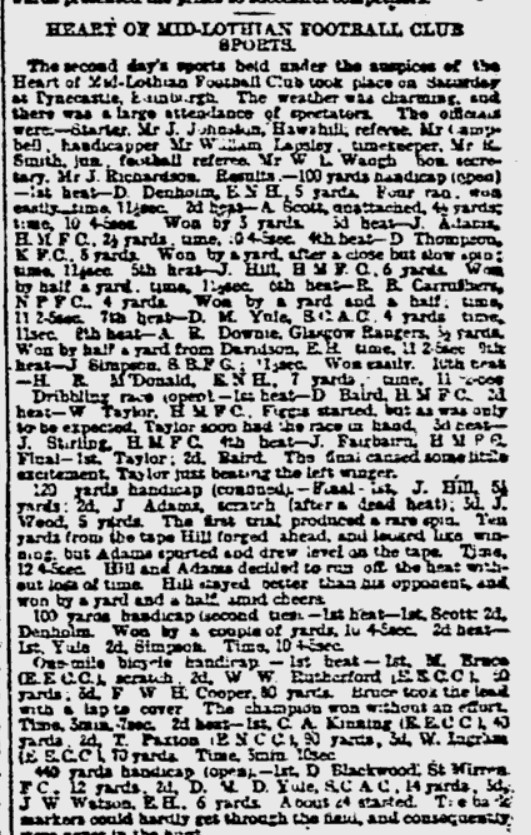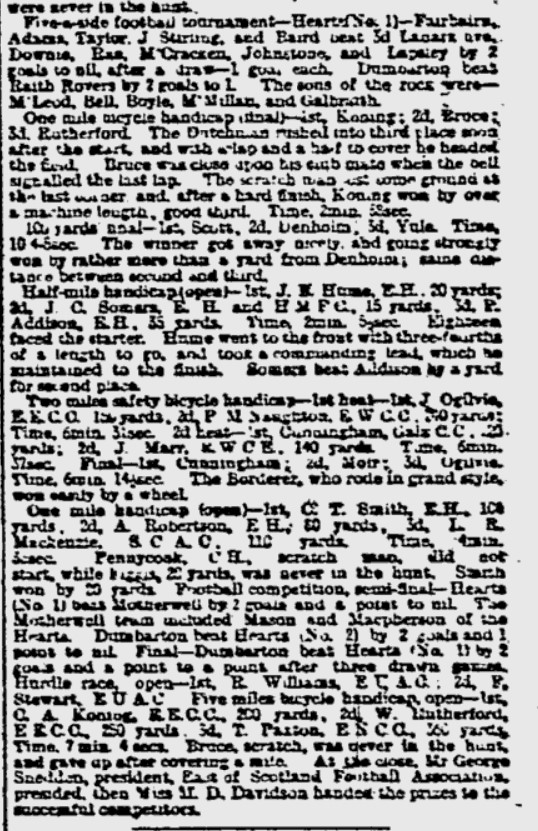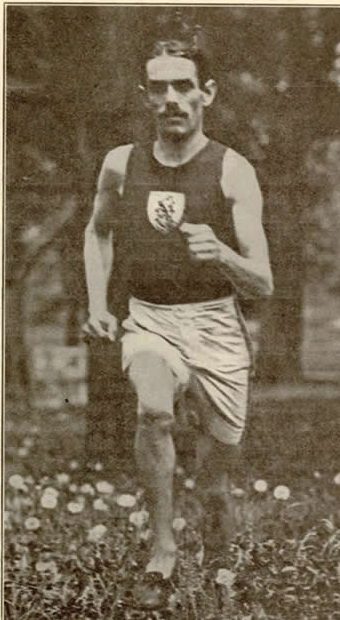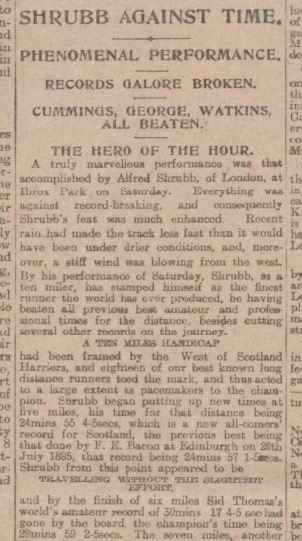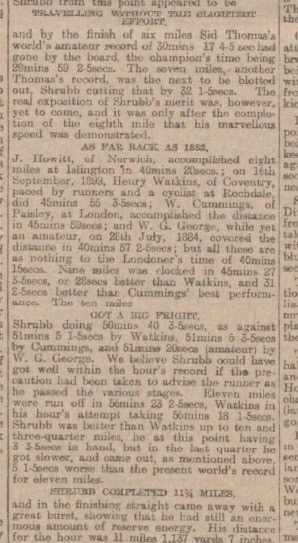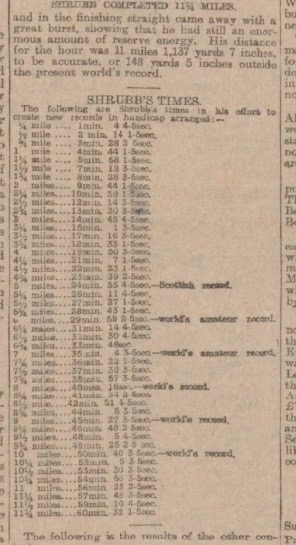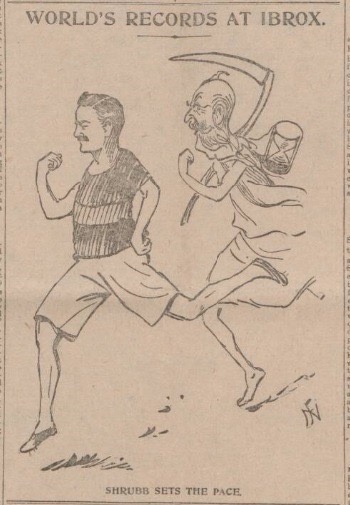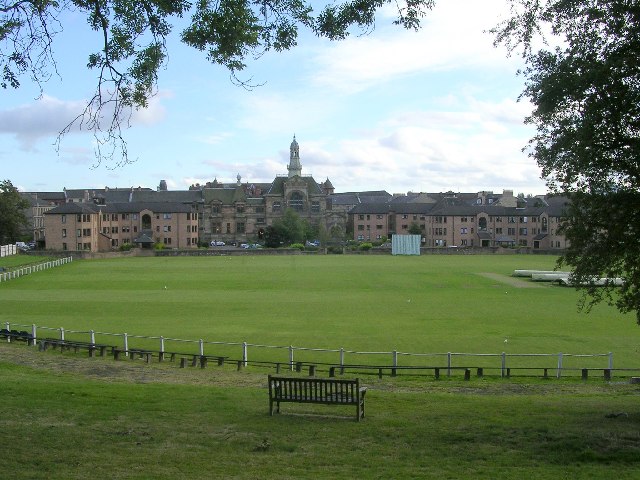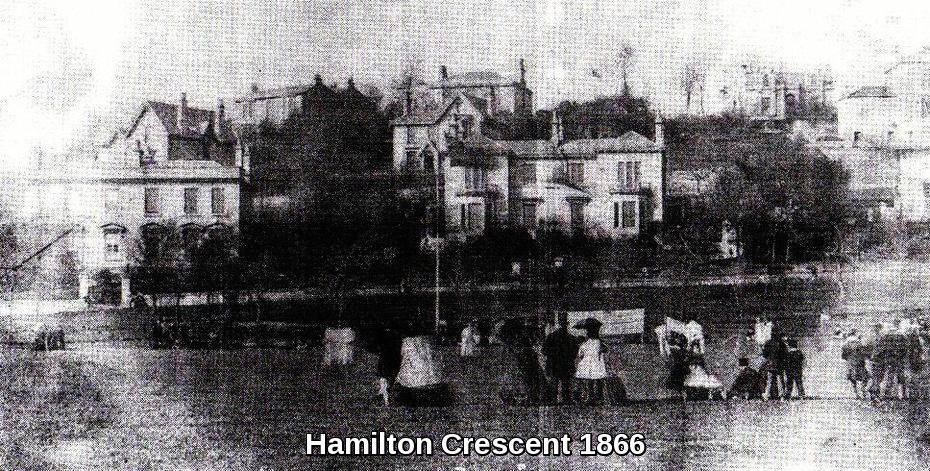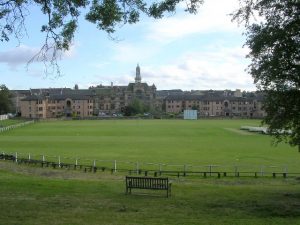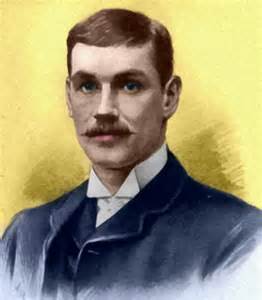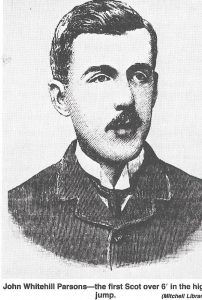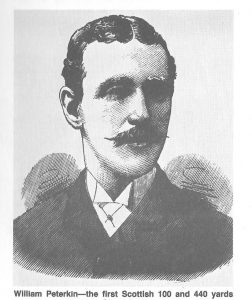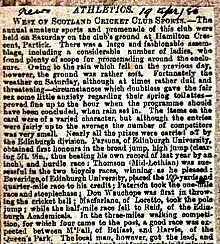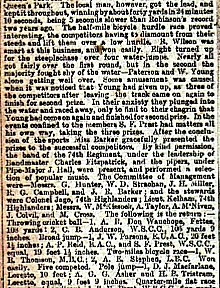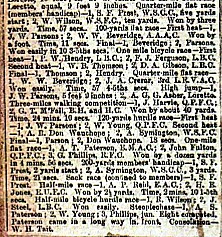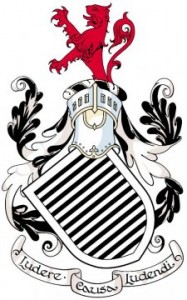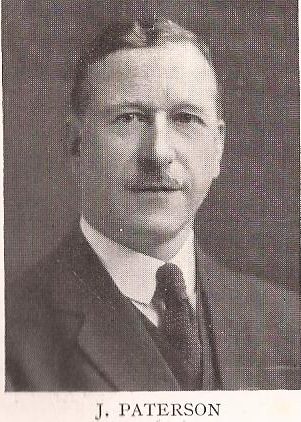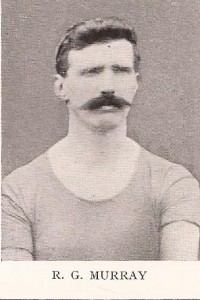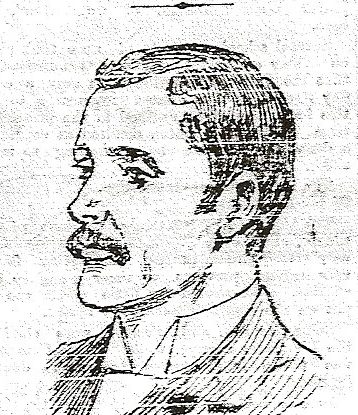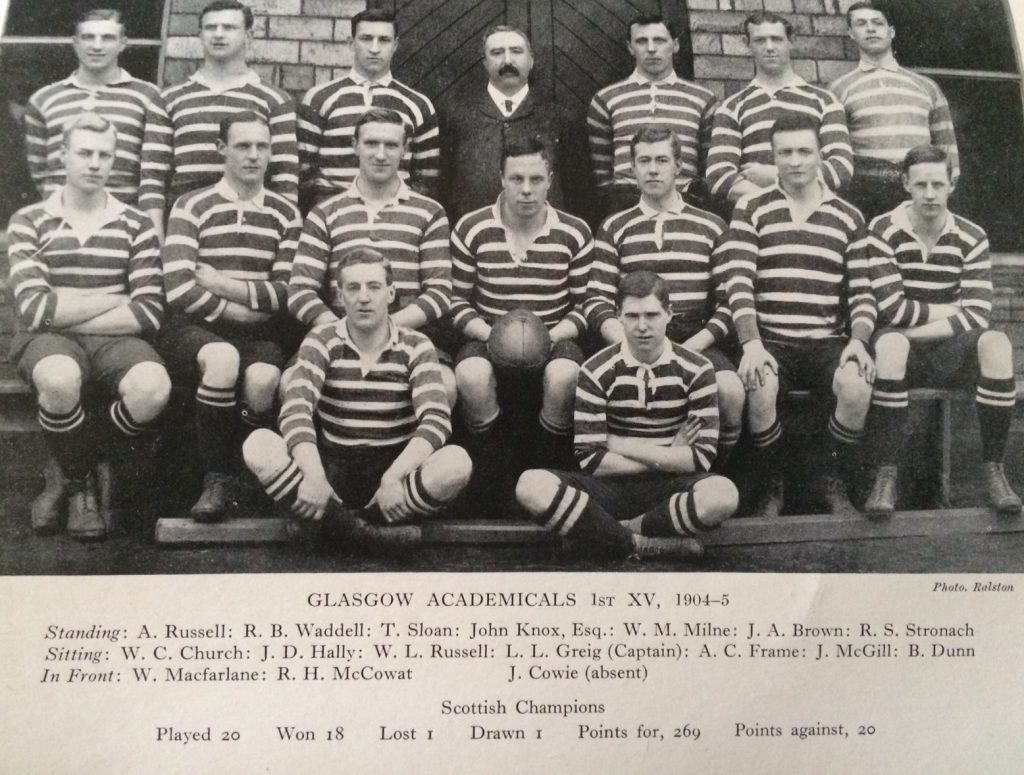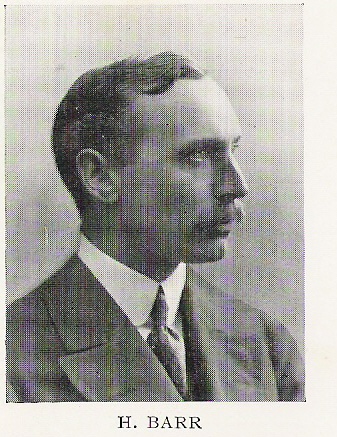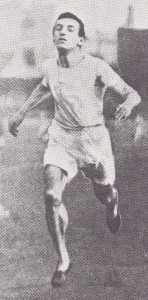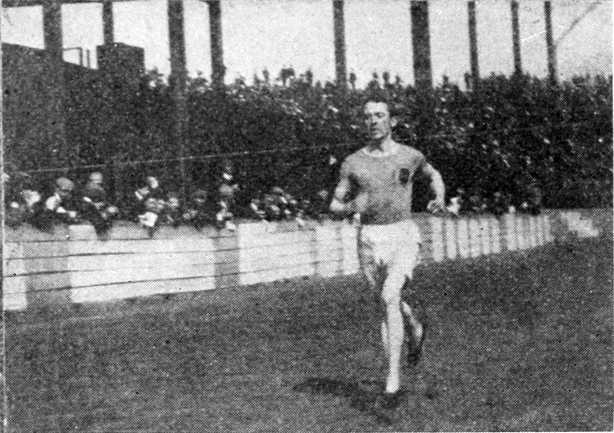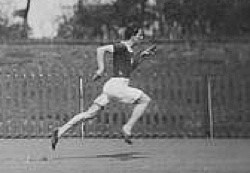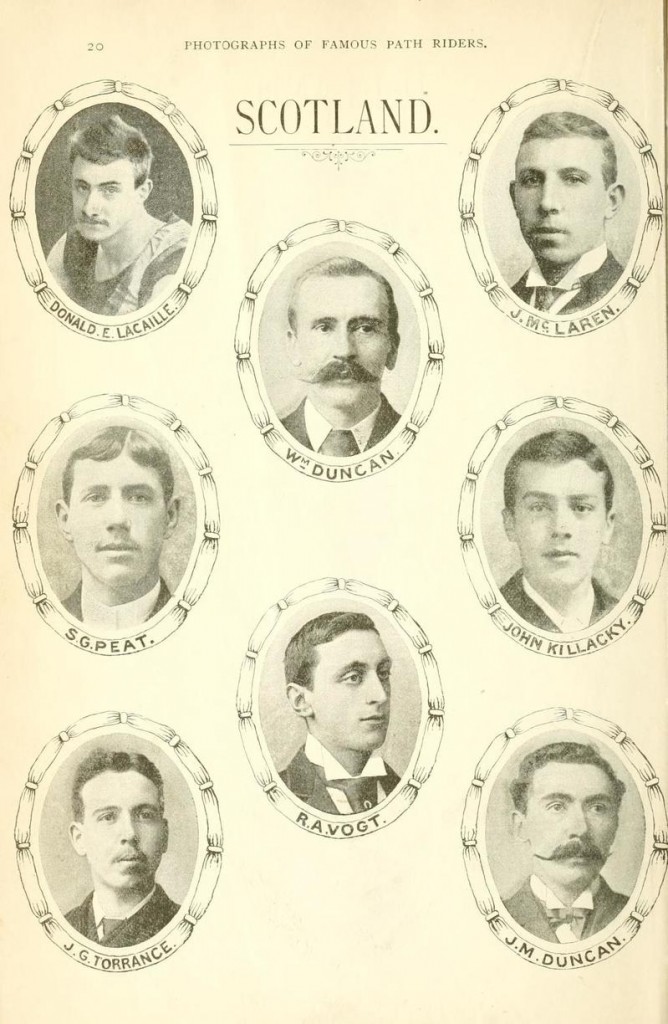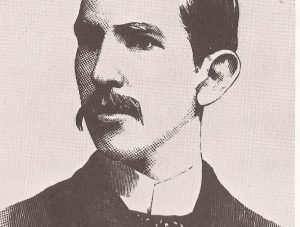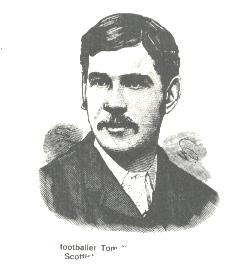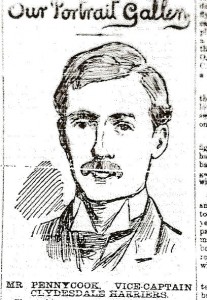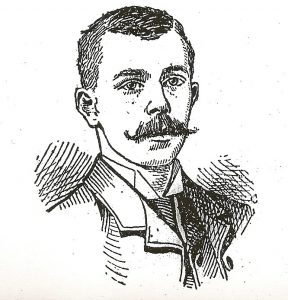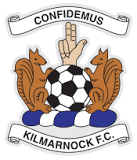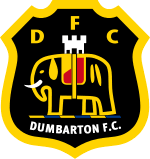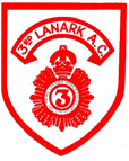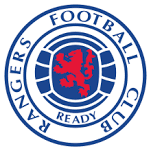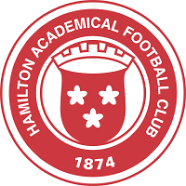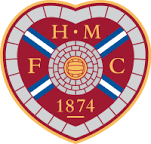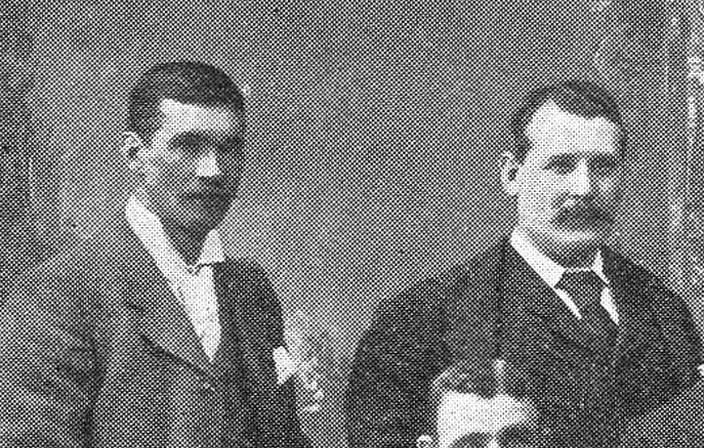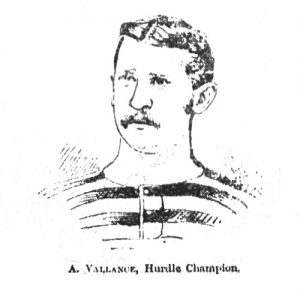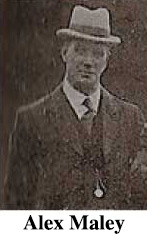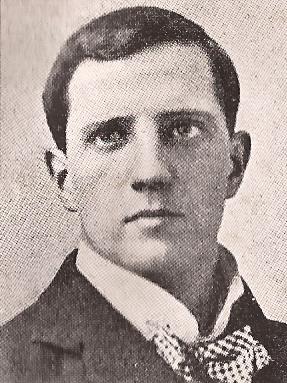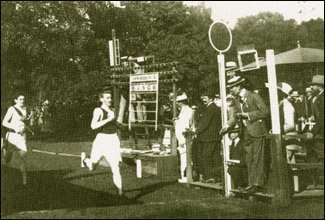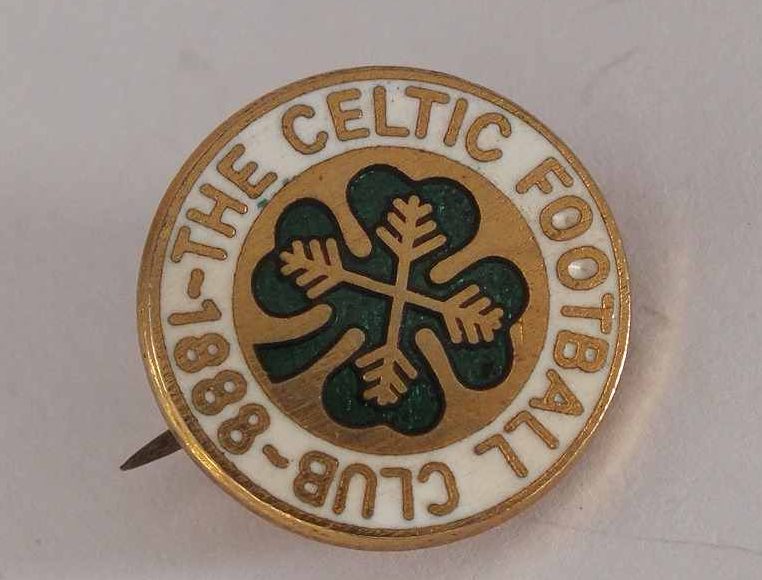The map above shows how isolated Milton of Campsie and Lennoxtown are in 2020. It was much more so in the late 1940’s. Kirkintilloch was the nearest town of any size and there was no running track, the only pavilions were for a couple of football teams, and yet some of the best international athletes in the world – sprint hurdlers, middle distance runners (at least one a world record holder), throwers and jumpers all travelled to this rural spot on the edge of the Campsie Fells to compete. See the photograph below for the quality men who took part in what was the best ever in the area.
Back Row: Dick O’Rafferty, Dave Guiney (1948 Olympian), Jim Reardon (1948 Olympian), John Joe Barry, Jack Gregory (GB Olympian, 1948 and 1952), Paul Dolan (1952 Olympian), Ulick O’Connor, Con Sheehan.
Front Row: Prince Adedoyin (1948 Olympian), Canon Denis O’Connell, Charlie McManus , Liam Brown
The answer is sitting second from the left in the front row. Canon O’Connor was a young live-wire Catholic priest who went to Lennoxtown and let his love of sport shine through to change the attitudes of the population who mainly thought of football when the word sport was uttered. Ordained as a priest in Ireland in 1941, he then spent all of his life in Scotland. St Machan’s and Lennoxtown where he was assistant priest. During this time Fr O’Connell’s ;ife-long love of athletics was to come to the fore as he organised Community Games. During his early years in Scotland he was alarmed at the sectarian divide in the West of Scotland perpetuated through football, and set about using athletics as a means to bring different religious communities together. He initiated a series of Community Games where athletes of all backgrounds could compete freely regardless of background or religious belief. He moved to St Agatha’s in Methil in 1949.
Right from the start there was sporting action at St Machan’s Boys Guild. Fortunately much of it was covered by the local Press and so we have first hand information about a lot of it. Where possible we will let the Press of the time tell the story.
The Boys Guild competed in a host of events all through the summer and won pretty well all of them and were referred to in one article in late August as ‘the District cracks’. On 22nd August for instance they won the Inter Parish Boys Guild Championships at Adamslie Park to win the trophy donated by Tommy Lorne, the famous comedian. On 30th September 1942 the following article appeared in the Kirkintilloch Herald.
It had been a good year and it was to be followed by another successful season. On 23rd June, 1943 the notice below appeared in the ‘Kirkintilloch Herald’
The following week it was announced that there would be an inter-youth team contest including St Mary’s Guild, Pollockshaws (Glasgow Boys Club Champions) and St Machan’s BG at Lennoxtown as one of the star attractions of the meeting. There were many meetings in which the boys took part – eg at the Catholic Youths Welfare Sports at St Moan’s, St Machan’s were easy winners of the various championships and went home with four cups and a shield. On 13th July the club sports trophies were presented by Father Wheelan at a function presided over by Rev Father O’Connell. The Boys Guild was firing on all cylinders and at the start of September this notice appeared:
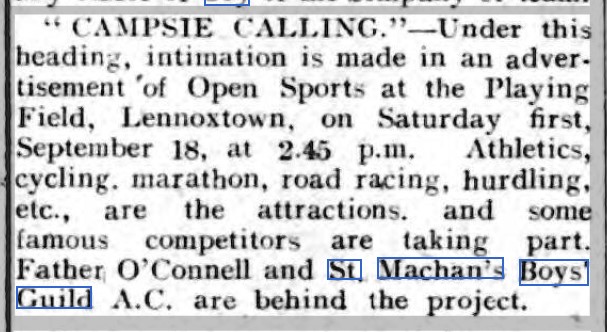 And the famous name was revealed in the issue of 20th September –
And the famous name was revealed in the issue of 20th September –
*
The 1944 season started with an open meeting in May at Wishaw organised by the local St Ignatius Club, where they performed well. At the end of June they were only beaten by that year’s champions, Wishaw Boys Club, because there were two field events – junior and senior high jump involved. Had it been only track events, they would have won. By now there was a St Machan’s AC and the Press on 30th August, 1944 reported under the heading ‘Outstanding Sports meeting at Lennoxtown’ that “St Machan’s Athletic Club held their second annual sports meeting on Saturday at Lennoxtown Playing Fields before a good attendance. Competitors included nearly all the leading Scottish champiopns and a small but notable support from English runners. Among the foreign competitors were a team from Norway and two coloured runners from British Honduras. The highlight of the sports was undoubtedly the magnificent performance of JC Corfield of Tipton Harriers and W Donaldson, RAF, in the two miles team race. Donaldson led most of the way until about two laps to go, then Corfield put in his effort, going on to win by about 12 yards. JE Farrell, Scottish cross-country champion and track ten mile champion was third. The race was easily the fastest two miles run in Scotland this year. Dunky Wright again got on the winning road in the 15 miles road race in the good time of 1 hr 28 min 16 sec, from his clubmate G Porteous of Maryhill Harriers, 1 hr 31 min 33 sec. Porteous it will be remembered won the steeplechase at Rangers Sports.”
The report went on to describe almost all the events and the standard was high. The report ended with the following –
Father O’Connell was being noticed.
*
Better known as a track club, the club also competed cross-country although there were at that time no events for Under 15 or Under 13 Boys. Their Youths division did well and one of the highlights was on the first Saturday in March.
The club had a good summer competition and then the big meeting of 1945 was introduced by the following lead in to the event in the local Press:
Unfortunately, the weather did not do its bit to make the event a success – the start to the report indicates this.
Competitors on this dismal day included Alan Paterson who could only manage 6’0 in the conditions while TD McKie of Glasgpw Police, with an 8″ handicap took first prize. The two Irishmen Dave Guiney and Tom Wall gave a demonstration of the shot putt and high jump respectively.
The 1946 programme, courtesy of John Mackay of Shettleston Harriers, can be seen here
The article in the “Kirkintilloch Herald” of Wednesday 14th August, 1946, indicated a club of some strength. Read this one.
There was more coverage over the summer but the range of meetings listed above gives some indication of the club’s activities.
The first notice of the Campsie Highland Games was in the Kirkintilloch Herald of Wednesday 4th September, 1946, under the heading ‘World’s Champion for Campsie’. The article started:
The review then went on to list the Irish runners and their achievements: they were led by L ieut Con Sheehan “who excelled himself recently at the Clonliffe diamond jubilee sports, when in receipt of one and a half yards, he showed a clean pair of heels to the brown bullet, MacDonald Bailey, On this form Sheehan is in Britain’s top flight of sprinters.” The other relay runners were Paul Dolan (220 yards), Jimmy Reardon (440 yards) and Liam Browne (half mile). Dick O’Rafferty was a 6′ 4″ high jumper who led the field eventers. Were the Games a success? Emmet Farrell in his ‘Running Commentary’ in the Scots Athlete of October, 1946 reported thus:
The locals were more direct about the weather: “”When is Namcy Riach due to appear?” queried a competitor at Lennixtown’s High Games on Saturday shortly before the programme opened. The reference to Scotland’s swimmer was most appropriate for the day was more suitable for an aquatic display than an athletics match. Viewed from the heights of the playing field pavilion balcony the sports arena had the appearance of a giant paddling pond, its surface being dotted all over with pools, some of them ankle deep with more moisture coming down every minute. Our sympathies at this stage were with the St Machan’s AAC committee and particularly with the convener, Father O’Connell, Lennoxtown’s young priest and sportsman, who had worked with might and main to build a bill of champions the likes of which has seldom been seen outside the confines of London, Ibrox or Cowal. The meeting had a decided international flavour for competing were the pick of Scotland’s athletes, a strong team of challengers from Eire, stalwart sons of Poland and a big personality in Prince AE Adedoyin.”
The ‘Glasgow Herald’ simply said that “Good performances were discounted at St Amachan’s Sports where conditions were the worst possible for the many notable Irish, Scottish and Colonial competitors, but D Guiney (Dublin) putted the shot 44 ft 5 1/2 inches, the best performance in this event in Scotland this season. Prince Adedoyin (Queen’s University Belfast, won the broad jump and hop, skip and leap, and was placed second in the high jump handicap with 5′ 10″
A word about some of the competitors mentioned might be in order here.
*Prince Adedoyin was the son of the king of Ijebu Remo in Southern Nigeria who came to study medicine at Queen’s University, where he took up sport. He won the high jump at the AAA’s championships in 1947 with a 1.93m clearance. He competed for GB in the 1948 Games at high jump and long jump. There were also several appearances in international matches.
*Dave Guiney was an all-round sportsman who played Gaelic football, hurling and rugby union as well as winning 30 Irish titles as a sprinter, long jumper and weight thrower. He competed in the shot putt at the 1948 Olympic Games.
* Paul Dolan was an Irish sprinter who went on to compete in the 1952 Olympic Games in Helsinki.
*Ulick O’Connor was world famous as a talented sportsman, writer, poet, historian and critic who competed regularly in Scotland at many highland games such as Bute and Cowal.
*Jack Gregory competed for GB in the 1948 Olympics where he was part of the silver medal winning team with Alistair McCorquodale, Jack Arthur and Kenneth Jones.
These are just a few of the athletes competing at Campsie in 1946. Like all the best Sports of the era, there were open events and the locals in Campsie were out representing the local St Machan’s Harriers and their representatives won both Senior and Youths sprints. There was maybe some evidence of Canon O’Donnell’s practical athletic talents there. The club affiliated to the SAAA and to the SCCU was called the St Machan’s Boys Guild AC and competed in the National Cross-Country Championships in 1946/47 when they finished 6th, counting runners placed 10, 16, 33, 35. In 1947/48 the team failed to close in but there were three runners as individuals – W Ferrie 20th, F Kearney 60th and G Ferrie 112th. There was no St Machan’s representation in 1948/49. The pattern was similar in the District Championships with a complete team only finishing in 1946/47 in equal sixth with St Modan’s.
But if the Games of 1946 was good, 1947 was even better.
Community Sports and Games were held as usual through the year and then the following summer saw this notice in local, national papers as well as in the ‘Scots Athlete’. Maybe the weather the previous year, see the photograph above, had something to do with it but the event this time was to be held in July rather than September.
The date was significant because it came just 7 days after the AAA’s championships in London where several of the invited athletes were competing. Nevertheless this preview appeared in the Kirkintilloch Herald ten days before Campsie Games. Note the enhanced status of Price Adedoyen. Note too from the handbill above the increased number of star runners including John Joe Barry (the Ballycurran Hare) and Steve McCooke.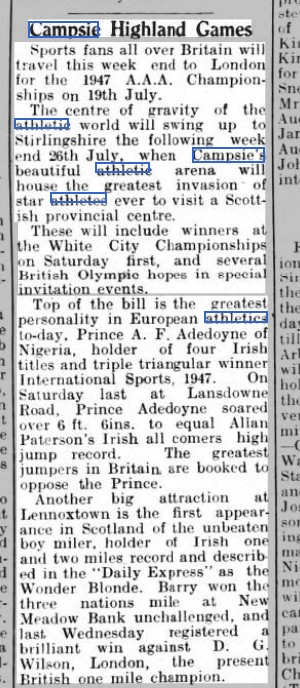
That Adedoyin was in great form was indicated by his performances in the Triangular international of 1947 – note the report in the Dundee Courier:
The meeting was well set up and under the heading “MANY BRILLIANT ATHLETIC PERFORMANCES” the “Glasgow Herald” reported
The performances were indeed good ones, with some being outstanding – particularly for the time and the venue.
100 yards: I Sutherland (VPAAC) (6 yards) 10 seconds; 220 yards: I Sutherland (VPAAC) (14) 23.2 seconds
400m invitation: ES Blackadder (West of Scotland) (26) 49.4 sec; 880 yards: H Malloy (West of Scotland) 13 1/2) 2:04
One lap (Youths) D McD Balloch (Auchmountain H) (30) 34.8 sec;
1500 metres (Invitation: JJ Barry (Clonliffe H) (scr) 4 min 8.8 sec; One Mile JJ Barry (scr) 4 min 26 sec;
5000m: A Forbes (VPAAC) (scr) 15 min 16.3;
High jump: A McLaren (St Modan’s) (9 in) 6′ 2″; Broad jump: D Davidson (St Modan’s) (3’3″) 22′ 8 1/2″;
Throwing 28lb weight: G Kordas (Nottingham U) (2′ 6″) 55′ 4″; Throwing 16lb ball: G Kordas (4′ 6″) 49′ 11″;
Throwing the Hammer: G Kordas, 172′ 8 1/2″
If these times, heights and distances are impressive, then it would have been even more so with the names of the unplaced athletes noted. It also took place just three weeks after the triangular international in which Barry won the mile and Forbes and McCooke were second and third in the three miles.
*
In July 1958 the St Machan’s boys were all competing well, winning more than they were losing in team competitions and tour of Ireland was organised with competitions against Irish athletics and boxing teams.
The meeting in 1948 was not as big as the two previous years and the preview in the ‘Kirkintilloch Herald’ read
but John Joe again took part and broke his own ground record for the mile. Results for this meeting have been hard to find but the entire Herald report is below.
Into 1949 and one of the finest cross-country runs in a St Machan’s vest was that of John Joe Barry who won the Irish cross-country championships entered as JJ Barry, St Machan’s. One of the initiatives started during the early 1940’s was a joint St Machan’s (Lennoxtown) and St Michael’s (Parkhead) international sports meeting at Helenvale in Glasgow and this went ahead again in June 1949. John Joe again appeared as St Machan’s in Scotland although keeping his Clonliffe Harriers membership in Ireland and at this time he really excelled himself. See below.
You will note the commenced about Rev Fr O’Connell. He left Campsie and Lennoxtown at some point in 1949 and moved on to Fife. That may be why it has been impossible so far to find any trace of the Campsie Highland Games in 1949 but we will continue to look. But if ever proof were needed that one man can change any situation, then surely the activities of Canon Denis O’Connell at St Machan’s is it.
